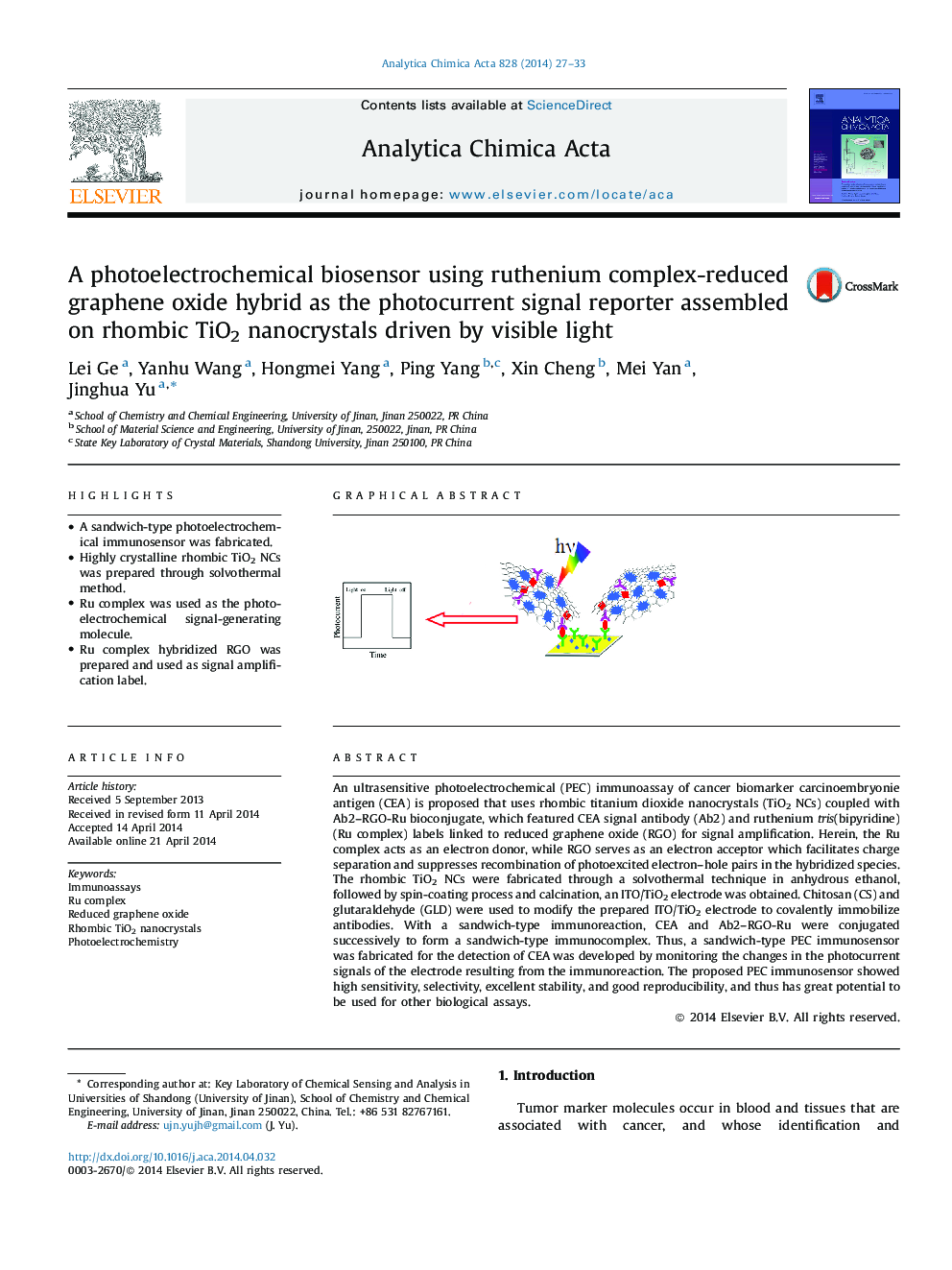| کد مقاله | کد نشریه | سال انتشار | مقاله انگلیسی | نسخه تمام متن |
|---|---|---|---|---|
| 1164709 | 1491004 | 2014 | 7 صفحه PDF | دانلود رایگان |

• A sandwich-type photoelectrochemical immunosensor was fabricated.
• Highly crystalline rhombic TiO2 NCs was prepared through solvothermal method.
• Ru complex was used as the photoelectrochemical signal-generating molecule.
• Ru complex hybridized RGO was prepared and used as signal amplification label.
An ultrasensitive photoelectrochemical (PEC) immunoassay of cancer biomarker carcinoembryonie antigen (CEA) is proposed that uses rhombic titanium dioxide nanocrystals (TiO2 NCs) coupled with Ab2–RGO-Ru bioconjugate, which featured CEA signal antibody (Ab2) and ruthenium tris(bipyridine) (Ru complex) labels linked to reduced graphene oxide (RGO) for signal amplification. Herein, the Ru complex acts as an electron donor, while RGO serves as an electron acceptor which facilitates charge separation and suppresses recombination of photoexcited electron–hole pairs in the hybridized species. The rhombic TiO2 NCs were fabricated through a solvothermal technique in anhydrous ethanol, followed by spin-coating process and calcination, an ITO/TiO2 electrode was obtained. Chitosan (CS) and glutaraldehyde (GLD) were used to modify the prepared ITO/TiO2 electrode to covalently immobilize antibodies. With a sandwich-type immunoreaction, CEA and Ab2–RGO-Ru were conjugated successively to form a sandwich-type immunocomplex. Thus, a sandwich-type PEC immunosensor was fabricated for the detection of CEA was developed by monitoring the changes in the photocurrent signals of the electrode resulting from the immunoreaction. The proposed PEC immunosensor showed high sensitivity, selectivity, excellent stability, and good reproducibility, and thus has great potential to be used for other biological assays.
Figure optionsDownload as PowerPoint slide
Journal: Analytica Chimica Acta - Volume 828, 30 May 2014, Pages 27–33